Join or Sign In
Sign in to customize your TV listings
By joining TV Guide, you agree to our Terms of Use and acknowledge the data practices in our Privacy Policy.
Nature Season 29 Episodes
Season 29 Episode Guide
16 Episodes 2010 - 2011
Episode 1
Cuba: The Accidental Eden
Sun, Sep 26, 2010 57 mins
The Season 29 premiere explores the natural splendor of Cuba, including its tropical forests, wetlands, desert coasts and extensive coral reefs, as well as the island nation's wildlife, which includes bats, owls, hummingbirds, crocodiles and sea turtles. The hour also explores the conservation work of Cuban scientists, some of whom make $25 a month, and American marine biologist David Guggenheim, who's studying Cuba's thriving coral reefs.
Episode 2
Echo: An Elephant to Remember
Sun, Oct 17, 2010 57 mins
The elephant Echo, who was the focus of books, documentaries and two previous "Nature" episodes, died in May 2009 at the age of 65. This installment celebrates her life and examines how her death has impacted her family, which faces the worst recorded drought to hit their home (Kenya's Amboseli National Park) even as they deal with their grief. Included: archival footage of Echo; remarks from filmmaker Martyn Colbeck and elephant expert Cynthia Moss, who both observed her for decades.
Episode 3
A Murder of Crows
Sun, Oct 24, 2010 57 mins
One of the world's most intelligent creatures is highlighted: the crow. The "feathered apes," as one researcher calls them, possess a sophisticated language of 250 calls and at least two dialects. They also can recognize (and remember) human faces, pass knowledge to their offspring and, on an island near New Zealand, use tools (making them one of the few creatures beside humans to do so). Other interesting facts: They mate for life, mourn their dead and raise their young for up to five years.
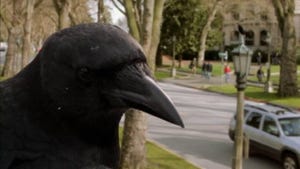
Episode 4
Braving Iraq
Sun, Nov 7, 2010 57 mins
The efforts of former Iraqi exile Azzam Alwash to restore Iraq's Mesopotamian Marshes, thought by many scholars to be the site of the Garden of Eden, are detailed. In the early 1990s, Saddam Hussein laid waste to the wetland in order to eradicate the rebellious Marsh Arabs; he constructed embankments to block the Tigris and Euphrates rivers from feeding the marsh, reducing it from twice the size of the Everglades to a fraction of its former self and destroying what had been a thriving ecosystem.
Episode 5
Wolverine: Chasing the Phantom
Sun, Nov 14, 2010 57 mins
The wolverine, the largest member of the weasel family, is spotlighted. The solitary creature, which is native to the upper reaches of the northern hemisphere, is a fearsome predator capable of taking down prey as large as a moose.
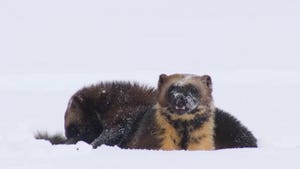
Episode 6
Revealing the Leopard
Sun, Nov 21, 2010 57 mins
The world of the leopard is explored via a mother leopard and her two cubs. The big cat, whose territory comprises almost half the world, is intelligent, deadly, feline-like and private, typically living in and around humans without being noticed. The documentary also looks at small Arabian leopards in the Middle Eastern deserts of Oman, Amur leopards in the snowy mountains of the Siberian Himalayas and leopards that live around farms and villages in India.
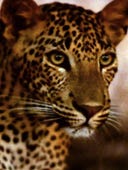
Episode 7
Elsa's Legacy: The Born Free Story
Sun, Jan 9, 2011 57 mins
The story behind "Born Free," the book and movie about an orphaned lion cub named Elsa who was raised by conservationists Joy and George Adamson and then released into the wild, featuring entries from George's diary, home movies and interviews with the couple's confidants. The episode also explores the shifting attitudes about conservation since the book's publication in 1960, and examines the pros and cons of viewing animals through a human lens.
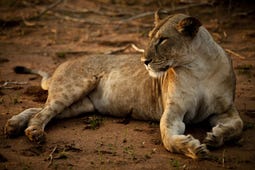
Episode 8
Birds of the Gods
Sun, Jan 23, 2011 57 mins
A journey into the New Guinean rain forest in search of the colorful birds of paradise, so named by 16th-century European explorers who believed the creatures were from heaven.
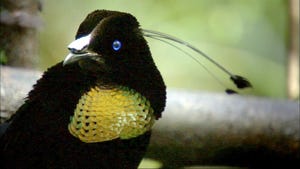
Episode 9
The Himalayas
Sun, Feb 13, 2011 117 mins
Examining the diversity of Himalayan habitats and wildlife, including snow leopards, red pandas, Asiatic black bears, musk deer, snub-nosed monkeys, Tibetan foxes and high-flying birds. Included: how eagles and wolves rely on teamwork to survive; how the blood of bar-headed geese has a special hemoglobin that enables them to fly in the thin air of the Himalayas. Also: the mountains' valleys, which are home to rain forests that conjure Shangri-La.
Episode 10
Broken Tail: A Tiger's Last Journey
Sun, Feb 20, 2011 57 mins
Wildlife filmmaker Colin Stafford-Johnson tracks the trek of Broken Tail, a 2-year-old tiger that disappeared from Ranthambore National Park, a tiger reserve in India, and was killed by a train 100 miles away. Their horseback journey takes them across Rajasthan, where they witness how India's historical and contemporary cultures are linked to tigers; introduces them to a poacher; and takes them to Ramgarh sanctuary, a former hunting lodge. They also share favoritie memories of Broken Tail.
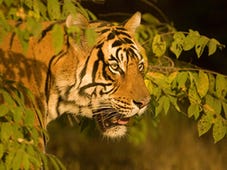
Episode 11
Outback Pelicans
Sun, Mar 27, 2011 57 mins
A look at Australia's nomadic pelicans, which travel over 1000 miles inland to feast on the fish and brine shrimp that appear in the usually dry Lake Eyre, which is the size of Texas, Oklahoma and New Mexico combined, when flood water fills it. The documentary examines pelican courtship displays, the shared incubation of eggs between the males and females, how the chicks are fed and the tantrums thrown by the young birds. It also ponders where the pelicans go once the lake's water evaporates.
Episode 12
Survivors of the Firestorm
Sun, Apr 17, 2011 57 mins
How nature rebounded from a 2009 wildfire in the Australian state of Victoria that decimated more than a million acres of forest. Wildlife Health Center personnel nursed injured animals, including wombats and kangaroos, back to health while nature also took root on its own, with dormant buds sprouting from beneath fire-insulating bark; orchids and lilies blooming in profusion; and birds competing for food and nesting sites. Also: rare possums are provided with feeding stations and nest boxes.
Episode 13
Salmon: Running the Gauntlet
Sun, May 1, 2011 57 mins
Examining the efforts to save the Pacific Northwest salmon from extinction, which include raising them in hatcheries and then transporting them on trucks and barges to the Columbia River a few miles below the Bonneville Dam. The documentary also details how the extinction threat the salmon faces isn't just a consequence of overfishing, habitat loss and dams, but also from the very efforts to save them.
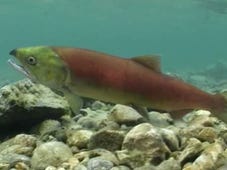
Episode 14
Bears of the Last Frontier
Sun, May 8, 2011 57 mins
Part 1 of 3. Bear ecologist Chris Morgan undertakes a yearlong motorcycle journey through Alaska's bear country to gauge the state of the ursine population. The odyssey begins in June on the Alaska Peninsula, where grizzlies use the long days to feed, mate and raise their cubs. Along the way, he experiences close encounters with some bears; observes battles between males; and watches tender moments between a grizzly mother and her cubs.
Episode 15
Bears of the Last Frontier
Sun, May 15, 2011 57 mins
Part 2 of 3. A look at black bears in the Anchorage area, where some ursines have become so used to their human neighbors that they've taken to living on a golf course. Bear ecologist Chris Morgan's odyssey then takes him north to Denali National Park, where grizzlies share the wilderness with foxes, wolves and moose; and to Prudhoe Bay, an Arctic area that's undergone drastic changes due to oil development.
Episode 16
Bears of the Last Frontier
Sun, May 22, 2011 57 mins
Conclusion. Bear ecologist Chris Morgan arrives in Kaktovik, a small town in northern Alaska, in early November. He observes polar bears subsisting on fat reserves while waiting for the opportunity to hunt on sea ice. In Barrow, the northernmost city in Alaska, he joins local hunters who face some of the same climate challenges as the bears. Come late spring, Morgan heads to the North Slope of the Brooks Range, where caribou congregate---and grizzlies feast.